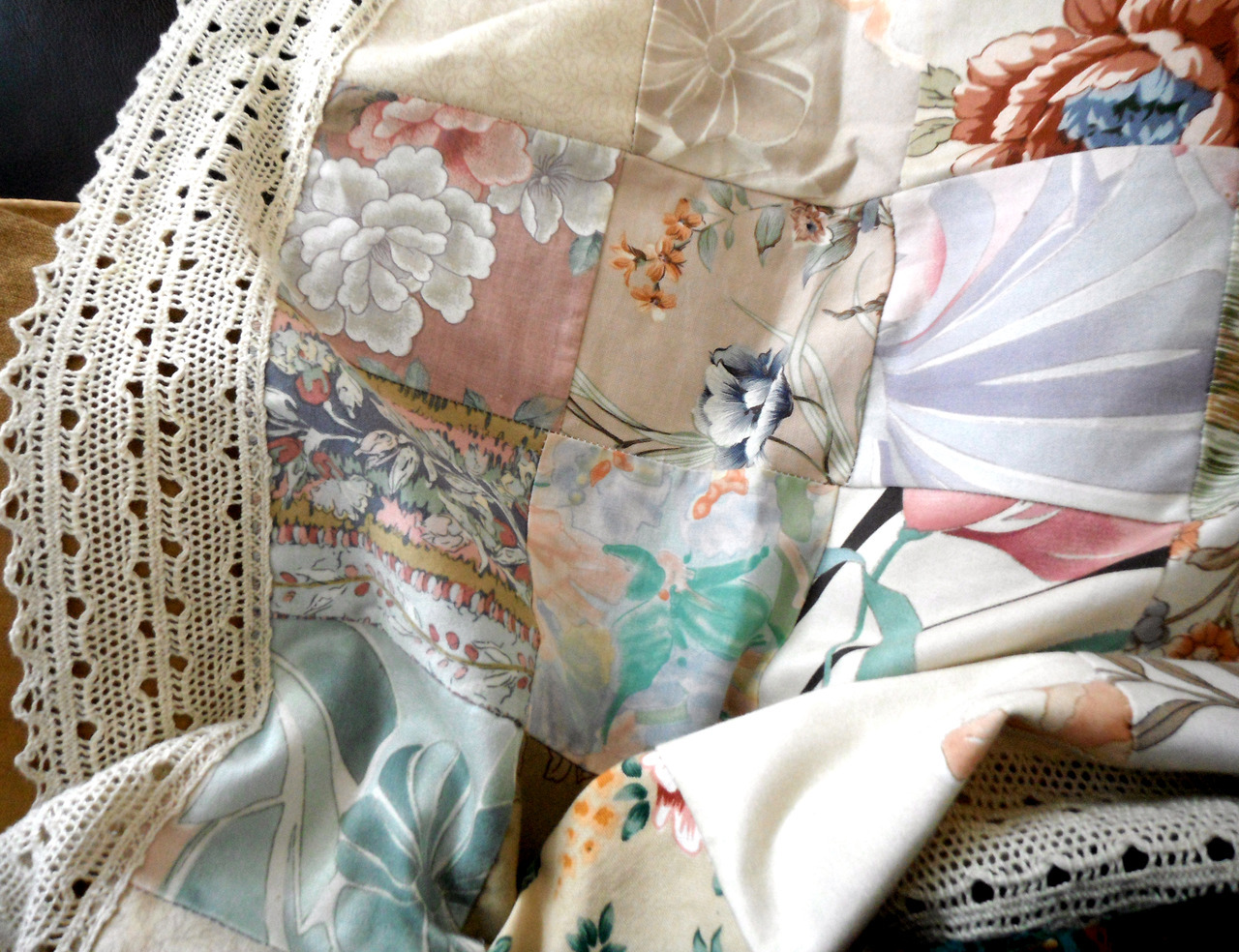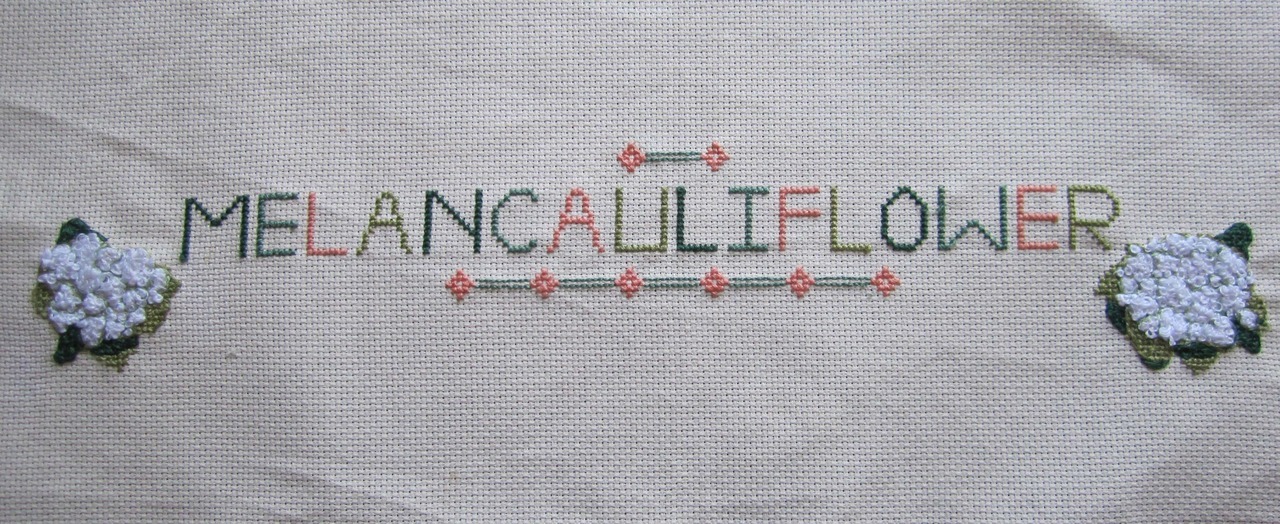When I first opened the envelope I assumed the flowers had been embroidered. However, embroidery this miniscule and delicate would be virtually impossible without a specialist programmable embroidery machine, which obviously did not exist in the 1930s!
With a quick Google search, I discovered that the flowers were in fact woven silk. Unfortunately, a scan doesn't do the flowers justice; they really are exquisite.

It was very fortuituous that Mark passed on these heirlooms to me today; I've recently started work on a new (and slightly ambitious project which they are both giving me ideas for, and can be incorporated into. I recently picked up a crazy hideous/beautiful 70s (?) patchwork table cloth with a doily trim from a stall near work, and when I saw it I knew I had to use it for something.
Each square is about four by four inches, and so I've decided to write a monologue across them in stitch, with occasional illustrations, story board style.
The piece will deal with sickness (and sickliness) and recovery, the subdued gloom of the English national psyche, weeds, delicate flowers, frailty, vulnerability, stereotypes of femininity, romantic literature and poetry, and thorns amongst the roses.
Its title will be Milk Thistle.
Some of the flowers which Mark passed on to me would work particularly well in Milk Thistle, due to the symbolism surrounding them. For example, Montbretia represents instability, which evidently relates to sickness, and Helenium represents tears, which is a theme I will explore through extension of my concept of "melancholyflowers".


Lilies, roses, and pansies are all flowers I want to incorporate into the piece due to their prominence in English literature and idioms.


I'd be very interested to learn more about flower symbolism and the language of flowers.
Finally, apparently, Flax is associated with domestic industry and the textile crafts, which is obviously of particular interest to me as a "conceptual embroidery artist"!








No comments:
Post a Comment